Starter Locs - 7 Critical Steps Before Starting Your Locs Journey
Are you ready to embark on a journey of self-expression and natural beauty? If you're considering starting your own set of starter locs, you've come to the right place. The significance of starter locs reaches beyond mere aesthetics, as they symbolize the beginning of a transformative experience, both physically and emotionally. However, before taking the plunge, it's crucial to understand the importance of proper preparation – a vital step that sets the foundation for a successful locs journey.

In this article, we'll guide you through the critical steps you need to take before starting your locs journey. From preparing your hair to choosing the right stylist, we'll ensure you have the knowledge to embark on your locs adventure with confidence. Let's dive straight into the must-knows for starting your locs journey.
What Are Starter Locs?
Starter locs, also known as baby locs, are the initial stage of the locs journey. They are formed by allowing the hair to naturally tangle and lock, creating individual sections that will eventually develop into fully matured locs. At this stage, the hair is in the process of transforming and transitioning, marking the beginning of a beautiful evolution.
How Do Starter Locs Differ From Fully Matured Locs?
While starter locs may resemble fully matured locs in appearance, there are notable differences between the two stages:
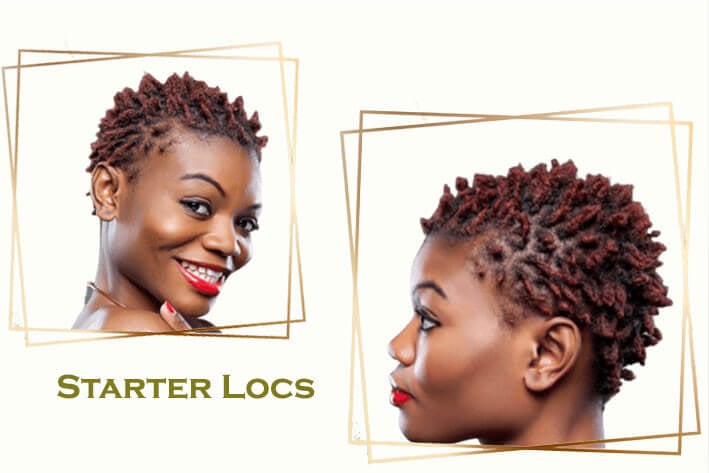
- Size and Thickness: Starter locs are generally smaller and thinner compared to fully matured locs. As the locs progress and mature, they tend to become thicker and more voluminous over time.
- Length: Starter locs are typically shorter in length as they are formed from the root, while fully matured locs can grow to various lengths depending on the individual's hair growth rate and desired outcome.
- Structure: Starter locs may appear less uniform and tightly packed compared to matured locs. As the journey progresses, the locs tighten and take on a more consistent structure.
- Maturity: Fully matured locs have undergone an extended period of growth and maturation. They have reached a stage where they are well-formed, solid, and tightly interlocked.
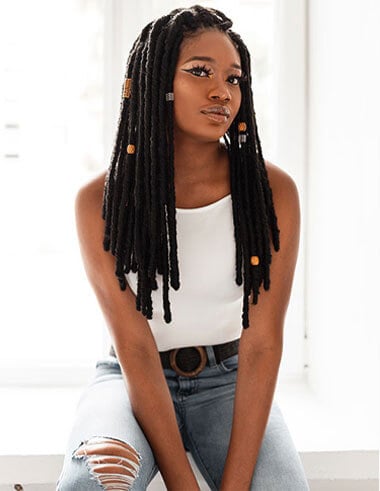
The Purpose of Starter Locs
Starter locs serve a crucial purpose in the locs journey. They provide an opportunity for the hair to go through the natural locking process, allowing the strands to intertwine and create defined sections. During this initial stage, the hair undergoes a gradual transformation, tangling and forming knots that will ultimately become solid and permanent locs.
Starter locs enable the hair to establish a strong foundation for future growth and maintenance. They allow you to become acquainted with the locs lifestyle, learning to care for and nurture your developing locs. This stage is also an opportunity to experiment with different styles and techniques that promote healthy hair growth and maintain the integrity of your locs.
What Is The Best Style To Start Locs?
Choosing the right method to start your locs is crucial as it sets the foundation for your entire locs experience. With various styling options available, finding the perfect style that suits your hair texture, desired outcome, and personal preferences is key.
In this section, we will explore different styles commonly used to start locs, such as two-strand twists, comb coils, braids, and more. By understanding the pros and cons of each style, you can make an informed decision that sets the foundation for a beautiful locs journey.
Two-Strand Twists
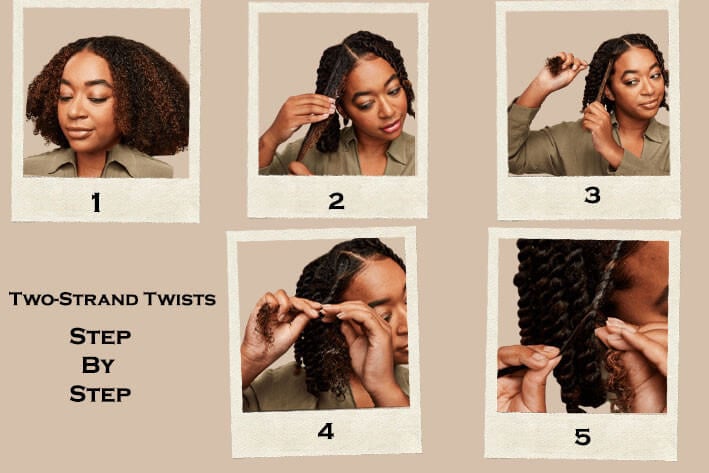
Two-strand twists involve dividing the hair into sections and twisting two strands together. This method is popular for starting locs as it creates defined and uniform sections. Two-strand twists are versatile and work well for various hair textures, allowing for a consistent and controlled start to your locs.
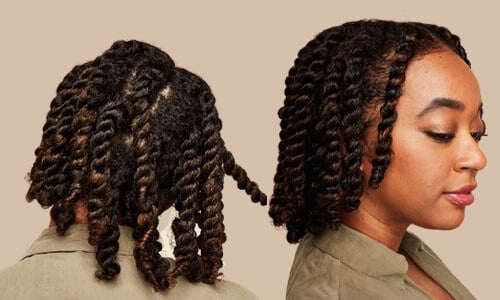
Pros
- Provides defined sections for a uniform look.
- Versatile and suitable for various hair textures.
- Easier to maintain and separate as locs develop.
Cons
- May require longer hair lengths for better results.
- Requires more initial time and effort for twisting.
Comb Coils
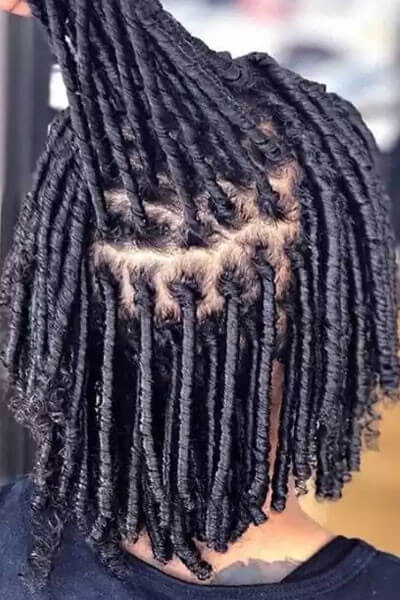
Comb coils are created by twisting small sections of hair tightly using a comb or your fingers. This technique is suitable for shorter hair lengths and produces cylindrical coils that gradually transform into locs over time. Comb coils are known for their neat appearance and can be an excellent option for those seeking a more defined look.
Pros
- Creates neat and cylindrical coils.
- Ideal for shorter hair lengths.
- Offers a structured start to the locs journey.
Cons
- May not be as suitable for all hair types.
- Requires careful twisting to avoid excessive tension.
Braid Locs

Braid locs involve braiding the hair from the roots to the ends, similar to traditional braids. This method provides a solid foundation for locs and is well-suited for individuals with thicker or coarser hair textures. Braid locs offer versatility, allowing you to experiment with different braid patterns while your locs gradually form.
Pros
- Provides a strong foundation for locs.
- Well-suited for thicker or coarser hair textures.
- Offers versatility with different braid patterns.
Cons
- Requires longer hair lengths for effective braiding.
- May take longer for locs to fully form and mature.
Free Forms

Free forms, also known as organic or natural locs, are a style where locs are allowed to form and shape themselves naturally without much manipulation or interference. This method embraces the hair's natural tendency to tangle and lock over time.
Pros
- Embraces the hair's natural tendency to tangle and form locs.
- Reflects authenticity and a connection to natural hair beauty.
- Minimal maintenance, ideal for those who prefer a hands-off approach.
Cons
- Less control over locs' size, shape, and uniformity.
- May take longer for the locs to develop a defined appearance.
- Requires patience during the early stages when the locs are less structured.
Instant Locs
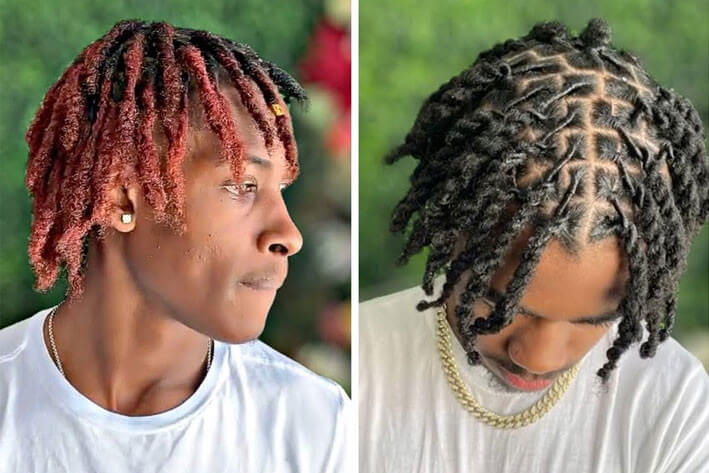
Instant locs, also known as crochet locs, offer the ability to achieve mature-looking dreadlocks in a shorter amount of time. Using a crochet hook, hairstylists meticulously knit the hair together, creating instant locs. The process involves sectioning the hair, followed by knitting each section using the crochet method.
Pros
- Immediate results with the appearance of mature locs.
- Control over length and size.
- Versatility in styling options.
Cons
- Limited natural hair journey experience.
- Regular maintenance requirements.
- Potentially limited flexibility in styling compared to fully matured locs.
Sponge Locs

Sponge locs involve using a sponge with small holes to create defined coils or twists throughout the hair. This method provides uniform and defined coils or twists for a consistent loc appearance.
Pros
- Uniform and defined coils or twists.
- Quick and efficient method.
- Can be done at home without professional assistance.
Cons
- May not be suitable for all hair types.
- Proper technique and moisture required.
- May take longer for locs to fully form and mature.
Palm Rolling
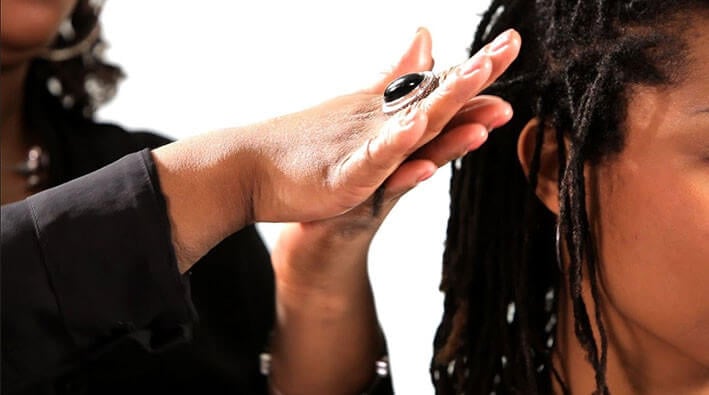
Palm rolling is a technique used to start and maintain locs. It involves taking a small section of hair between the palms and rolling it in a circular motion. This process creates friction, which encourages the hair to tangle and form into a cylindrical shape. Palm rolling is typically done on damp hair and can be combined with the use of a loc gel or wax to help smooth the hair and promote knotting.
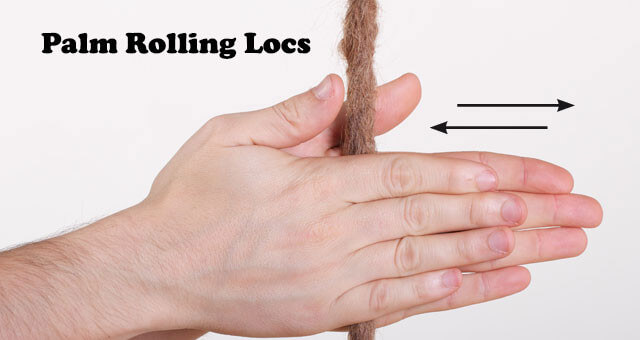
Pros
- Neat and uniform appearance.
- Control over shaping and tightening.
- Can be incorporated into regular maintenance routines.
Cons
- Requires consistent technique to avoid damage.
- May take longer for locs to mature.
- Not suitable for a natural or free-form look.
Faux Locs
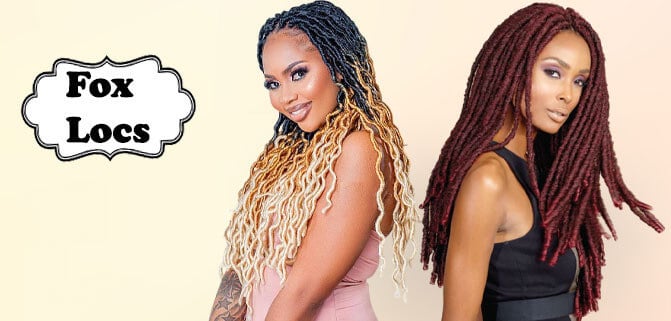
Faux locs offer the appearance of locs without the long-term commitment. Faux locs are created by wrapping individual sections of hair with synthetic or human hair extensions. They provide versatility in length, size, and colour options. Faux locs can serve as a protective style, allowing your natural hair to remain untouched while promoting hair growth.
Pros
- Versatility in length, size, and colour options.
- Temporary style to test out the locs look.
- Promotes hair growth and protects natural hair.
Cons
- Not suitable for long-term locs.
- Proper installation and maintenance required.
- May cause scalp sensitivity or allergic reactions.
Is It Better To Start Locs With Coils Or Twists?
The decision of whether to start locs with coils or twists is a common dilemma for individuals embarking on their locs journey. Both techniques offer distinct benefits and considerations, making the choice a personal one based on factors such as hair texture, desired outcome, and maintenance preferences.
Let's explore the pros and cons of starting locs with coils and twists, enabling you to make an informed decision that aligns with your unique needs and vision for your locs.
Starting Locs with Coils
As explained earlier, coils involve twisting the hair in a circular motion from the roots to the ends using a small comb, finger, or specialized tool. Here are the advantages and considerations of starting locs with coils:
Advantages
- Uniformity and Consistency: Coils create locs that appear uniform and consistent in size and shape, resulting in a polished and neat appearance.
- Faster Locking: The twisting motion of coils encourages quicker locking and tangling of the hair, expediting the overall maturation process of the locs.
- Versatility in Styling: Coils offer versatility in styling options while your locs are forming, allowing you to experiment with different updos, twists, or braid-out styles.
Considerations
- Potential for Frizz: Coils may be prone to frizz, especially if the hair is naturally textured or prone to shrinkage. Proper maintenance, moisturizing, and retwisting are crucial to minimize frizz and maintain a neat appearance.
- Tightness and Scalp Tension: If coils are twisted too tightly or maintained tightly, it can lead to scalp tension and discomfort. Striking a balance between tightness and comfort is important for long-term satisfaction.
Starting Locs with Twists
Twists involve dividing the hair into two sections and intertwining them, creating a rope-like appearance. Here are the advantages and considerations of starting locs with twists:
Advantages
- Versatility in Hair Types: Twists work well on various hair textures, including straight, wavy, and curly hair, making them a versatile choice for a wide range of individuals.
- Low Manipulation: Twists require less manipulation and maintenance compared to other starting methods, making them ideal for those seeking a low-maintenance locs journey.
- Natural Look: Twists provide a more natural and organic look, especially when combined with the free-form method, allowing locs to develop with minimal interference for a unique and authentic appearance.
Considerations
- Slower Locking Process: Twists may take longer to fully lock and mature compared to coils or other starting methods. Patience is required during the initial stages of the locs journey.
- Less Uniformity: Twists may result in less uniformity and consistency compared to coils. The size and shape of each twist may vary, creating a more organic and textured appearance.
- Potential for Unraveling: Twists may unravel more easily compared to coils, requiring more frequent retwisting to maintain the desired locs shape and prevent loose ends.
The choice of whether to start locs with coils or twists ultimately depends on your individual preferences, hair texture, desired appearance, and maintenance commitment. Consider your hair type, desired outcome, and long-term maintenance goals when making the decision, and embrace the method that resonates with you. Remember, both coils and twists can lead to beautiful and fulfilling locs journeys – it's all about finding the approach that aligns with your unique path.
What To Do Before Getting Starter Locs (7 Critical Steps Before Starting Your Locs Journey)
Preparing yourself properly before embarking on your starter locs journey is vital to ensure successful and thriving locs. There are seven critical steps you should take before getting starter locs to establish a strong foundation for healthy and beautiful locs.
From conducting research and consultation to evaluating your hair's health, clarifying and moisturizing, and choosing a knowledgeable loctician, these essential steps will guide you towards a transformative and empowering locs experience. Let's explore these seven critical steps and discover the key to a successful and fulfilling locs journey.
Step 1: Research and Consultation
Before starting your locs journey, conduct thorough research to familiarize yourself with the process, maintenance, and different loc styles. Seek advice from professional locticians or individuals with experience in locs. Consultation with a trusted stylist will provide insights specific to your hair type and address any concerns or questions you may have.
Step 2: Evaluate Your Hair's Health
Ensure your hair is in good health before starting your locs. Address any existing issues like breakage, dryness, or scalp conditions through proper moisturizing, deep conditioning, and regular trims. Assessing and improving your hair's health beforehand will contribute to the overall strength and vitality of your locs.
Step 3: Clarify and Detoxify Your Hair
Prior to starting your locs, clarify and detoxify your hair to remove any product buildup, oils, or residues. Use a clarifying shampoo or natural detoxifying treatments to thoroughly cleanse your scalp and strands. This step creates a clean canvas for your locs to form, ensuring better adherence and reducing the risk of potential issues.
Step 4: Moisturize and Hydrate Your Hair
Hydration is vital for healthy locs. Start a consistent moisturizing routine to keep your hair adequately hydrated throughout your locs journey. Use natural oils, leave-in conditioners, or water-based moisturizers to keep your hair soft, supple, and nourished. Remember, well-moisturized hair leads to resilient and vibrant locs.
Step 5: Choose a Knowledgeable Loctician
Finding a skilled and knowledgeable loctician is crucial for a successful locs journey. Research reputable professionals who specialize in locs and have a track record of creating healthy, well-formed locs. Seek recommendations and read reviews to ensure you choose a loctician who understands your hair type and can guide you through the process.
Step 6: Mentally Prepare for the Commitment
Starting locs is a long-term commitment, and it's important to mentally prepare yourself for the journey. Understand that locs require patience, perseverance, and acceptance of the changes your hair will undergo. Embrace the beauty of the process, and mentally prepare yourself for the self-discovery and growth that accompanies your locs transformation.
Step 7: Embrace a Supportive Hair Care Routine
Establish a hair care routine specifically tailored for locs. This includes regular maintenance appointments with your loctician, scheduled wash days, and proper handling techniques. Research suitable products and techniques for cleansing, moisturizing, and styling locs to ensure optimal health and longevity.
Starter Locs Dos And Don'ts
To ensure a successful locs journey, it's important to establish a solid foundation with proper care and maintenance. In this section, we will explore the essential dos and don'ts for starter locs, equipping you with the knowledge and guidance to promote healthy and thriving locs. By following these best practices, you'll set yourself up for a rewarding and transformative experience as your locs evolve.
Do’s for Starter Locs
Keep Your Scalp Clean: Maintain a clean scalp by regularly washing your locs and scalp with a gentle clarifying shampoo. Cleanliness prevents product buildup and keeps your scalp free from dirt and bacteria.
Moisturize Your Locs and Scalp: Hydrate your locs and scalp with a lightweight moisturizer or natural oils to prevent dryness and promote healthy hair growth. Focus on the ends of your locs, as they are prone to dryness.
Protect Your Locs at Night: Before bed, cover your locs with a satin or silk scarf or sleep on a satin pillowcase to minimize friction and preserve the moisture in your locs. This helps prevent frizz and breakage.
Regularly Retwist Your New Growth: As your hair grows, schedule regular retwisting appointments with a professional loctician or learn how to retwist your locs yourself. Retwisting helps maintain the neatness and structure of your locs.
Be Patient: Understand that locs take time to mature and develop their full potential. Embrace the journey and be patient as your locs transform, knowing that the end result will be worth it.
Don'ts for Starter Locs
DON'T Overload with Products: Avoid using excessive amounts of styling products, gels, or heavy oils that can cause buildup and make your locs heavy or greasy. Opt for lightweight, water-based products suitable for locs.
DON'T Retwist Too Frequently: While regular retwisting is important, refrain from retwisting too frequently, as it can lead to thinning or weak spots in your locs. Aim for retwisting every 4-6 weeks or as advised by your loctician.
DON'T Over Manipulate Your Locs: Minimize excessive touching, pulling, or twisting of your locs. Over-manipulation can lead to breakage, thinning, or even unravelling of the locs. Allow them to naturally form and develop over time.
DON'T Skip Regular Maintenance: Stay consistent with your locs maintenance routine. Neglecting regular maintenance, such as retwisting, cleaning, and moisturizing, can hinder the progress of your locs and lead to less desirable outcomes.
DON'T Use Harsh Hair Tools: Avoid using harsh hair tools like fine-toothed combs, small brushes, or tight hair ties that can cause damage or breakage to your locs. Opt for wide-toothed combs or your fingers for gentle manipulation.
How Long Does It Take For Starter Locs To Lock
Starting your locs is an exciting journey, but it's essential to understand that the locking process takes time and varies from person to person. On average, starter locs can take anywhere from 3 to 12 months to begin locking. Factors such as hair texture, thickness, maintenance routine, and individual hair growth patterns can influence the timeline.
It's important to be patient and allow your locs to naturally form and mature over time. Regular maintenance, proper care, and avoiding excessive manipulation will contribute to the locking process, ultimately leading to beautifully locked and well-established locs.
What Helps Starter Locs Lock Faster?
If you're eager to see your starter locs mature more quickly, this article will provide you with valuable tips and insights. From proper maintenance routines to lifestyle adjustments, we'll explore effective strategies to help your locs lock faster and promote a successful locs journey. Let's unlock the secrets to achieving beautifully formed and well-established locs in less time!
Cleanse and Clarify Regularly
Keeping your scalp and locs clean is vital for optimal loc formation. Regularly wash your locs with a clarifying shampoo to remove excess oils, product buildup, and debris. This allows your hair to knot and intertwine more efficiently, encouraging faster locking.
Practice Palm Rolling and Interlocking
Palm rolling is a technique that involves rolling the locs between your palms to encourage knotting and maturation. Perform palm rolling regularly, focusing on individual locs. Another method is interlocking, which involves using a tool to pull the hair through the loc and tighten it. Both techniques promote faster locking and help maintain a neat appearance.
Encourage Natural Knotting
Avoid excessive manipulation and grooming of your locs. Let your hair naturally intertwine and knot as much as possible. Limit the use of combs, brushes, or other tools that can disrupt the locking process. Embrace the beauty of the free-form method, allowing your locs to take shape organically.
Avoid Product Buildup
Excessive use of heavy oils, waxes, or styling products can hinder the locking process. These products can weigh down your locs and impede their ability to intertwine. Opt for lightweight, water-based products or natural oils that won't leave residue or buildup.
Maintain Proper Moisture Balance
Balancing moisture is crucial for healthy locs. Dry locs can be brittle and prone to breakage, while overly moist locs can be susceptible to mould or mildew. Find the right balance by moisturizing your locs with water-based products or natural oils, focusing on the ends and avoiding the scalp.
Adopt a Healthy Lifestyle
Your overall health plays a role in the growth and development of your locs. Maintain a balanced diet, drink plenty of water, and exercise regularly to promote healthy hair growth. A well-nourished body produces stronger and more resilient hair, facilitating faster loc formation.
Be Patient and Consistent
Although these tips can help expedite the locking process, it's important to remain patient and consistent in your loc care routine. Every hair journey is unique, and the timeline for locking varies for each individual. Embrace the process, stay committed to proper maintenance, and trust that your locs will mature beautifully in due time.
Final Thoughts
Starting locs and caring for them requires dedication, patience, and a deep understanding of the various techniques and methods. We have explored the best styles to begin your locs, the importance of proper preparation, and the pros and cons of each method. From the decision between coils and twists to tips for faster locking, we've covered key aspects to help you make informed choices and achieve healthy and thriving locs.
Remember, each locs journey is unique, and it's essential to embrace the process, care for your locs with love, and enjoy the transformation as your locs evolve over time. With the right knowledge and consistent maintenance, your locs will grow into a beautiful and empowering hairstyle that reflects your natural beauty and personal style.
FAQs
Do starter locs grow faster?
Starter locs do not necessarily grow faster than regular hair growth. However, the appearance of growth may be more noticeable as the hair locks and coils, giving the illusion of faster growth.
Is it OK to touch your starter locs?
It is generally advised to minimize touching or manipulating your starter locs excessively. Frequent touching can disrupt the locking process and lead to frizz or unravelling. Gentle maintenance and occasional re-twisting by a professional are recommended.
Do starter locs get thicker or thinner?
Starter locs have the potential to both thicken and thin out over time. Initially, locs may appear thicker due to the gathering and matting of hair. However, as the hair matures and settles, individual locs can become thinner due to hair shedding or the merging of neighbouring locs.
Should I oil my starter locs every day?
Oiling your starter locs every day is not necessary and can lead to product buildup. Instead, focus on maintaining a balanced moisture level by moisturizing with water-based products or natural oils every few days or as needed.
How long does it take for starter locs to look good?
The timeframe for starter locs to look good varies for each individual. On average, it can take anywhere from 3 to 12 months for starter locs to develop a more mature and polished appearance. Proper maintenance, regular retwisting, and patience are key factors in achieving aesthetically pleasing starter locs.